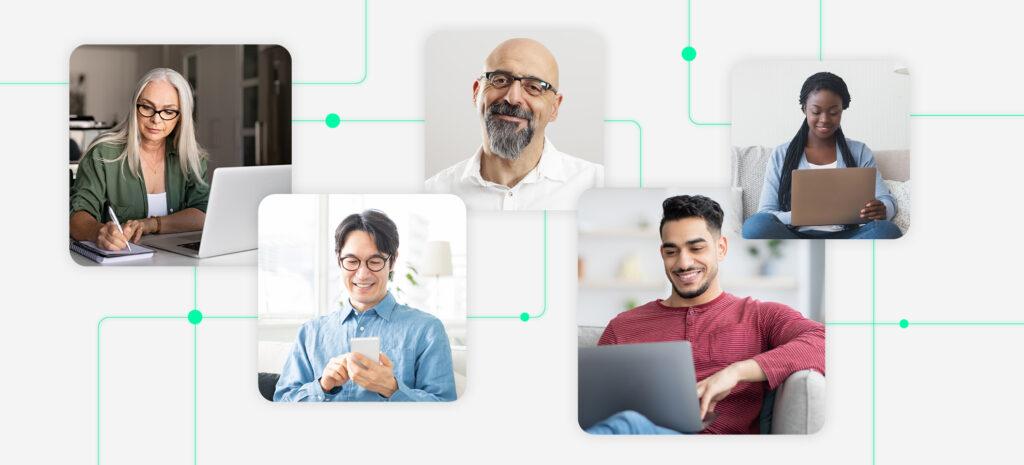Article updated November 2023.
What is compliance in the pharma industry, and how can pharma teams use tools and methodologies that support more compliant activities?
Pharmaceuticals are a highly regulated industry for a good reason: safety, efficacy, and the outsized impact medicines and treatments can have on patients’ lives. Regulatory scrutiny occurs across pharmaceutical operations, including sales and marketing, drug price reporting, patient privacy, clinical trials and operations, preclinical work and testing, and manufacturing. This makes pharma compliance one of the topmost priorities for companies. The ramifications of not complying with regulatory affairs in pharma can be serious, including significant financial judgments and even legal and criminal consequences.
Due to the risk of non-compliance and other threats to the pharmaceutical industry, drug developers should thoroughly understand what regulatory bodies govern them, be aware of new guidance and how it applies to them, and prioritize regulatory compliance at an enterprise level – all while minimizing delays and accelerating time to market and patient access.
3-7x the feedback.
90% less reporting & analysis time.
What is regulatory compliance in pharma?
Regulatory compliance means adhering to the legislation and regulations that apply to a company’s business. For a pharmaceutical manufacturer, this means complying with applicable laws enacted by a governing body and rules set forth by a regulating agency. Most countries differentiate between the two, with the difference between pharmaceutical legislation and pharmaceutical regulations described as follows:
“Legislation refers specifically to the creation of laws that are usually written in fairly general terms to meet present and possible future needs. They have language that enables the government to issue regulations based on the law. Passing new laws requires a lengthy process and involves a country’s legislative body.
Regulations are the rules established by an agency that interprets the laws to facilitate their practical implementation. They can be passed more quickly and simply than laws…Regulations have a way of expanding far beyond the size of the enabling law.”
To illustrate this example, consider the difference in the US between regulatory bodies like the FDA and laws that may change or update the way regulations are created or enforced. According to consulting firm PwC:
“In addition to the industry regulatory establishment (i.e., FDA, DHHS, EMEA, VA, and others), most major pharmaceutical and healthcare products companies are subject to the Security and Exchange Commission’s rules promulgated by the Sarbanes-Oxley (SOX) legislation. The intersection of SOX requirements and industry regulatory concerns is best understood within the context of the reporting and control mandates set forth under the SOX legislation’s Section 404. Industry-based regulatory compliance is highly relevant to the financial and operational control requirements described in Section 404 and thus creates additional impetus to align corporate compliance activities with multiple regulatory regimes.”
What is the purpose of regulations in the pharma industry?
Government regulation of pharmaceutical companies extends the timeline for new drug development, but these measures are enacted in the interest of public health. For instance, in the United States, the Food and Drug Administration or FDA regulations include extensive testing of new drugs to ensure product quality, safety, and efficacy, with the additional goal of minimizing side effects. Nearly all governments have a regulatory agency aimed at protecting citizens from harmful drugs and ensuring product quality. Besides the US FDA, these include EMA in the European Union, TGA in Australia, MHRA in the United Kingdom, and MCC in South Africa, to name a few.
The role of regulatory agencies
Regulatory agencies generally have two priorities: ensuring drug safety and effectiveness and facilitating access to medically useful drugs. But these goals are often at odds with one another, raising several important questions for regulators:
“The problem facing regulators is that efforts to achieve one goal may in fact reduce the chances of achieving the second goal. Stringent regulations designed to keep dangerous or ineffective drugs off the market may delay patient access to new medicines. Alternatively, efforts to improve drug access by lowering regulatory stringency and accelerating reviews could lead to the approval of some drugs that are either unsafe or ineffective.
The trade-off between safety and access is a central one in the regulation of new pharmaceuticals. The challenge for pharmaceutical regulators is balancing an interest for safety and efficacy with an interest for timely access. Finding the right balance, however, requires regulators to weigh the costs of unsafe or ineffective drugs against the costs of delay in the approval of beneficial drugs.”
How the pandemic altered the compliance picture
In 2020, the pharma industry – together with the government and other industries – sought ways to speed up the delivery of life-saving treatments and medical supplies. Regulatory processes were changed or paused as high demand and lockdown restrictions threatened the availability of critical supplies. Some regulatory changes from regulatory bodies worldwide included:
- Remote inspections for pharmaceutical facilities
- Reducing data requirements for clinical trials
- Issuing guidelines to maintain social distancing in trials or waiving the guidelines where warranted
- Lengthening the time period a prescription is valid
- Rolling reviews to accelerate emergency use authorization (EUA)
- Increased acceptance of decentralized trials and the benefits of hybrid clinical trials
While some of these adjustments returned to pre-pandemic standards, other pandemic-era shifts may be permanent. For example, the way companies and individuals communicate is much more tech-enabled, with patients, healthcare providers, and pharma organizations much more likely to engage online or via apps. This could expose companies to risk if digital communication channels are not secure. Pharma companies should ensure they communicate with patients, payers, and experts via secure platforms with built-in compliance features.
The increased use of technology, including artificial intelligence, will force further regulatory changes. According to Pharmaceutical Technology:
“Regulatory flexibility is not about dropping standards or compromising [good manufacturing practice] compliance, but rather improving synergies with better collaboration between regulators and manufacturing companies, while incorporating risk-based approaches. The future of quality in the pharmaceutical industry could be more innovative and efficient than ever, with digitalization and collaboration with regulatory agencies.”
What are the risks of regulatory non-compliance in pharma?
Regulatory non-compliance can profoundly impact a pharma company’s finances, reputation, and customers. But the world’s leading pharmaceutical manufacturers and firms must innovate efficiently while monitoring compliance risk mitigation and risk management. Therefore, most of the world’s leading drug manufacturers also face similar types of risks around regulatory compliance.
RELATED CONTENT
A guide to pharma industry compliance software
Whether you opt for traditional pharma industry compliance software, adopt an insights management platform, or consider a combination of the two, regulatory affairs and compliance in pharma will remain non-negotiable industry cornerstones. We look at the types of compliance software for pharma and life science innovators and how an insights management element in the stack helps compliance and regulatory teams, including med affairs, execute with confidence, agility, and speed. Learn more in our guide to pharma compliance software.
A guide to pharma medical affairs compliance
Due to the importance of providing credible medical information and the growing scrutiny on medical affairs, one of the most important responsibilities of medical affairs is facilitating effective and legally compliant interactions between life science organizations and HCPs. Standardizing advisory board interactions in a central platform, with reliable and repeatable processes and outputs, enables pharma medical affairs teams to get better insights while remaining compliant. Read more about medical affairs compliance.
Rather than settling for siloed views of regulatory affairs – in which individual teams are responsible for ensuring compliance – pharmaceutical organizations should build an enterprise-level view of what’s happening with regulatory issues. Drugmakers can also adopt technological compliance solutions to improve regulatory compliance. For instance, the use of big data in the pharma industry is increasing across the organization, from research and development to marketing. Regulatory affairs should explore whether this type of disruptive innovation in pharma can maintain data integrity and decrease the risk of compliance issues.
How can insights management support pharma compliance?
Some companies use tech solutions like pharma compliance software to help them stay within the proper guidelines and regulations. Insights management can help pharmaceutical firms and compliance committees reduce overall regulatory non-compliance concerns and enforce good manufacturing practices. For example, engaging key experts, healthcare professionals, or patients in a virtual advisory board environment allows medical affairs teams and the firm’s compliance teams to maintain vigilance when soliciting scientific input, dealing with sensitive personal medical information, or creating patient retention strategies in clinical trials. Commercial teams can also rely on an insights management platform to ensure they are engaging patients with the appropriate level of privacy or double-blinding discussions to eliminate the appearance of bias or influence.
Within3’s insights management solution provides drug manufacturers a better way to achieve an enterprise-wide view of insight-gathering activity. To learn more about applying better insights management within a life science organization, download our white paper.






